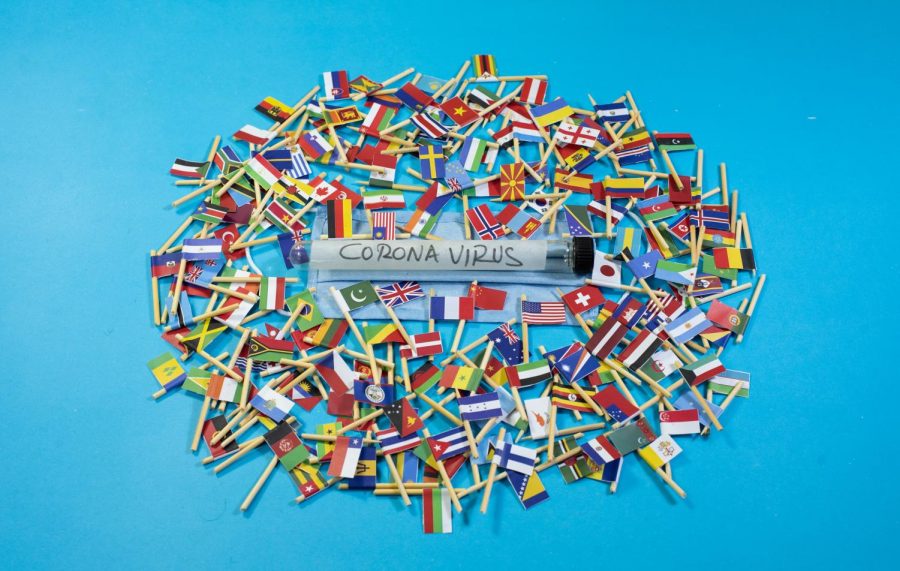Op-Ed: No, COVID isn’t an excuse for your xenophobia
December 6, 2020
The ongoing coronavirus pandemic has naturally disrupted various parts of human life. Social isolation has resulted in declining mental health, education has been disrupted, and an incredible number of lives have been lost. Billions of lives have been changed immensely, regardless of whether or not they themselves have suffered from the coronavirus, and many fear there won’t be a return to normalcy any time soon. Still, the rise of xenophobia as a result of COVID-19 is unnecessary and inexcusable.
Such xenophobia began with the use of the term “China Virus.” This misnomer was popularized by President Donald Trump, who frequently referred to COVID-19 in this way. Even after the World Health Organization (WHO) declared the spread of COVID-19 to be a pandemic on March 11, President Trump tweeted about the so-called “Chinese Virus,” and continued to use this term throughout his media appearances and public speeches.
In fact, a close-up picture of President Trump’s notes during a news conference in March revealed that he had crossed out the word “corona” in order to identify the virus as “Chinese”. After such usage, the hashtags #ChinaVirus and #WuhanVirus were trending on several social media platforms. After reporters and other government officials confronted the President about such racist comments, he justified his use of the term by saying, “It’s not racist at all […] It comes from China, that’s why.”
This justification suggests that the name manifested from a belief that China is to blame for the creation and spread of the coronavirus. Some, such as Senator John Cornyn, R-TX, have gone so far as to blame Chinese culture. Despite their denial of accusations of racism, this term is clearly racist and xenophobic, as it encourages hatred and violence against those with Chinese ancestry.
The acceptance and promotion of such xenophobia by government officials caused a surge of racist attacks against Asian Americans. The organization STOP AAPI HATE, which developed to address anti-Asian and Pacific Islander rhetoric as a result of COVID-19, shared that they had received around 1,500 reports of verbal and physical assault from Asian Americans by the end of April. Because many fail to distinguish the many different East Asian identities, anyone who looks Chinese is at risk of such an attack.
Students on Vanderbilt’s campus are not protected from such instances of hatred. Chinese-American student Jenny Gao (Class of ‘21) said that while on campus in the week following spring break, she was told that she “looked like she had COVID.” In response to this statement, Gao explained, she realized she “could no longer feel safe in [her] own skin.”
This rise in anti-Asian xenophobia unfortunately did not encourage any government action to reduce such hatred. Instead, the term “China virus” is still used regularly by government officials. After recovering from COVID-19 in October, President Trump even said that he “beat this crazy, horrible China virus.”
Not only is this misnomer incredibly harmful and xenophobic, it’s also an inaccurate term to describe the virus and the pandemic. The spread of this virus is not limited to one country, one ethnicity, or one race. In fact, by March 26 the United States had surpassed China in terms of reported cases, and by May 28 the U.S. had the most reported cases of COVID-19 worldwide.
This xenophobia has extended into U.S. immigration policy as well, as the government uses the pandemic to justify harsher policy. The Coronavirus Aid, Relief, and Economic Security Act (CARES Act) neglects immigrants, even those who directly pay federal taxes. The closure of U.S. Citizenship and Immigration Services (USCIS) offices throughout the country left many immigrants, including essential workers, without means to renew their authorization to work in the U.S. or pursue naturalization. Immigrant physicians on H-1B visas could face deportation if they succumb to COVID-19 and are unable to work.
In contrast to the xenophobic belief that immigrants are responsible for the spread of COVID-19, immigrants are actually critical to the U.S.’s ability to fully respond to the pandemic. 28% of highly-skilled healthcare workers are immigrants. There are approximately 10,000 physicians in the U.S. working on H-1B visas, as well as around 15,000 immigrant nurses.
The uncertainty of the pandemic justifies a fearful response, but xenophobia is unacceptable. As explained by Gao, “COVID is not only hurting Asian Americans–it also has the highest death rate among Black Americans and in areas with less access to health care.” During a time in which Black and Hispanic Americans are 2.8 times more likely to die from COVID-19, and rural Americans are 2.5 times more likely to die than urban Americans, xenophobia is not the answer. Rather, unity is necessary if the country and world is expected to effectively distribute a vaccine and reestablish normalcy.
The current administration continues to employ xenophobic fear-mongering tactics as a way to deflect responsibility for poor policy decisions. This is a common strategy of the Trump administration, as they repeatedly incited Islamophobia to justify banning immigrants from predominantly Muslim countries, and used anti-Latinx xenophobia to suppress immigration. By blaming the entire Chinese population for the spread of COVID-19, President Trump and other bigoted individuals are allowed to continue disregarding CDC guidelines and make light of the pandemic. With more than 1.5 million lives lost to this disease, we must not fall into this trap.








